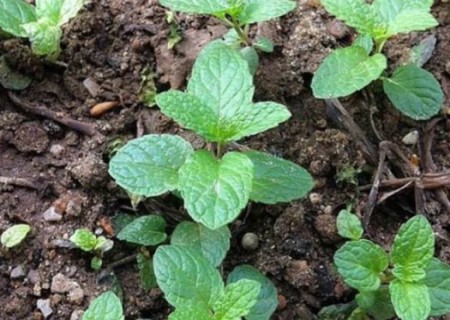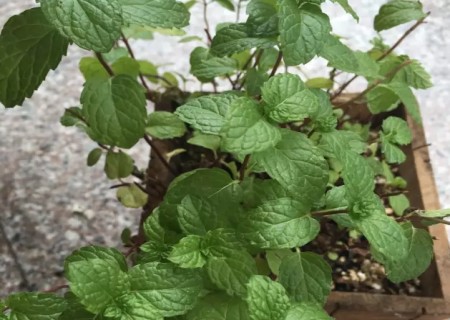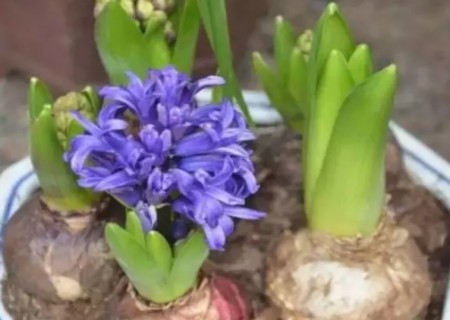How to sow peppermint seeds-peppermint sowing method
Peppermint perennial root herbs, plant height 20-40 cm, stems and leaves with mint fragrance, do more flavor seasoning, beverage additives. Fresh peppermint leaves can be used as a vegetable, but also can remove fishy taste, is a necessary seasoning for edible beef. Fewer diseases and insect pests, leaves can expel mosquitoes and flies, more resistant to high temperature, but also resistant to low temperature, requiring adequate sunshine, well-ventilated environment and fertile, well-drained medium cultivation.
The varieties with strong growth, strong disease resistance, high brain content and pure fragrance should be selected in summer breeding of peppermint. The suitable time for seed sowing is from March to April in spring and from September to October in autumn. Seed dressing with new high-fat membrane before sowing can ward off underground diseases and insects, isolate virus infection, do not affect germination and swelling function, strengthen respiratory intensity and improve seed germination rate.

In the north, only by taking effective cultivation and protective measures in winter, is it possible to meet the requirements of picking in winter. Peppermint is easy to degenerate, so we should do a good job in seed retention and selection. There are two common methods:
1. Seed selection: for mint fields with only a small amount of hybrid degradation, when the seedling is 15 cm high in late April, or when the two-knife mint is 15 cm high in late August, combined with weeding, wild species or other hybrid species can be removed by rooting twice, and inferior and diseased seedlings can be pulled out at the same time.
2. Stubble seed retention: in late April, a robust but undegraded mint plant was selected in the peppermint field. According to the row spacing of 15 cm × 20 cm, the plant was transplanted into the seed field, and the management was strengthened. When it was cultivated and dug at the beginning of winter, a new white rhizome of 70% and 80% could be obtained, which could be used for planting.
[about peppermint seeds]
Germination temperature: 20-25 ℃
Germination days: 10-15 days
Suitable temperature for growth: 18-35 ℃
Light: semi-overcast and plenty of sunshine
Sowing to flowering: about 70 days
Color: purple
Plant height: 20-30cm
Friends who like to open up a "small vegetable garden" on their balcony might as well plant a small piece of mint, which not only tastes fresh and fragrant, but also has a lot of nutritional value. Next, I'll show you how to grow peppermint on the balcony.
[sowing method]
Use loose and well-drained fertile soil, water thoroughly before planting, and pay attention to evenly sowing seeds on the soil layer. Because the seeds of mint are very small, there is no need to cover the soil. The moisture of the soil should be maintained properly, and a small spray can be used to spray and moisturize the seeds.
Sow seeds in an environment of about 20 ℃, be careful not to exceed 25 ℃. If the temperature is lower than 20 ℃, it can be covered with cling film to raise the temperature and keep moisture. When high temperature in summer, seeds should be placed in shade to cool down, because too high temperature is easy to make seeds short of water, in the case of no rooting, we can only rely on artificial water to ensure normal development.
If covered with cling film, the seeds should be removed in time after germination and moved to a place where appropriate light can be received.
Planting should not be carried out until the seeds grow 5-6 leaves. Generally, a small seedling should be planted in each hole, first straighten the seedling, straighten out the roots, then fill the soil and compact it, and water it thoroughly at one time. After the seedlings grow for a period of time, apply an appropriate amount of liquid fertilizer.
[cultivation management]
The main results are as follows: 1. The sandy soil with loose, fertile and good drainage is selected.
2. Water content should be adjusted continuously during plant growth. More water is needed in the early and middle stages of growth, but less in the flowering stage.
3. Peppermint needs to receive sufficient light, if the light is not enough, the plant is easy to grow.
4. Ternary or multi-element compound fertilizer can be selected for fertilization, especially potassium fertilizer can improve the problem of plant slender and weak.
Time: 2019-06-09 Click:
- Prev

How to cultivate peppermint by hydroponics
Peppermint, as if tirelessly exudes a fresh aroma, will not stop until late at night, thus getting the title of night fragrance. Peppermint tenacious vitality, almost all kinds of soil can grow, the unique aroma is relaxing and pleasant, is a particularly practical garden plant. Peppermint is one of the commonly used traditional Chinese medicines in China.
- Next

How to maintain and manage hyacinth after planting
Generally speaking, the flowering hyacinth only needs to wrap the hyacinth bulb in a cool and ventilated place, such as a newspaper, and then take it out and replant it around October of next year. Of course, you can also buy balls to plant. When selecting and purchasing seed heads, we should pay attention to selecting bright skin color and strong texture.
Related
- Fuxing push coffee new agricultural production and marketing class: lack of small-scale processing plants
- Jujube rice field leisure farm deep ploughing Yilan for five years to create a space for organic food and play
- Nongyu Farm-A trial of organic papaya for brave women with advanced technology
- Four points for attention in the prevention and control of diseases and insect pests of edible fungi
- How to add nutrient solution to Edible Fungi
- Is there any good way to control edible fungus mites?
- Open Inoculation Technology of Edible Fungi
- Is there any clever way to use fertilizer for edible fungus in winter?
- What agents are used to kill the pathogens of edible fungi in the mushroom shed?
- Rapid drying of Edible Fungi

